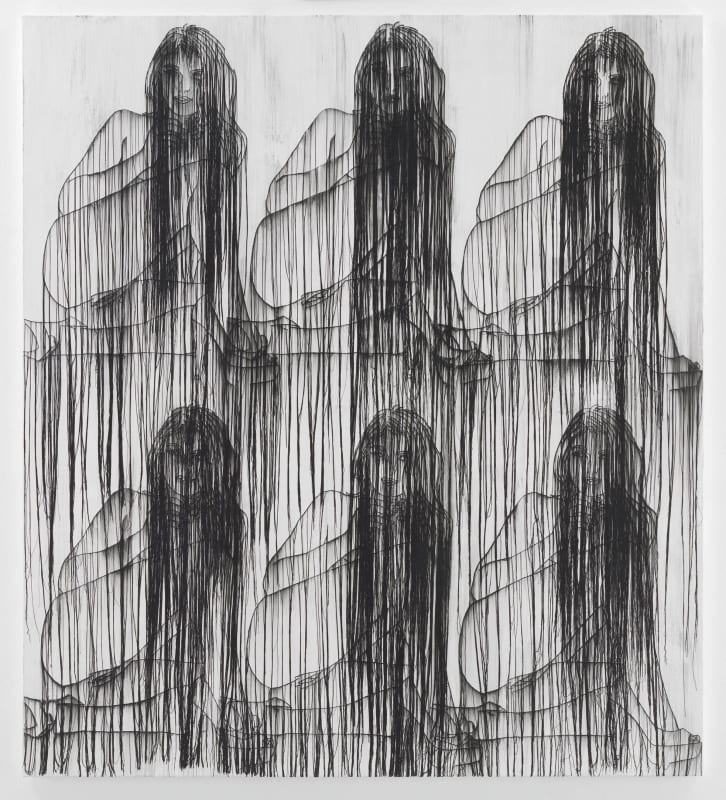Ghada Amer was born in Cairo in 1963 and raised in France where she studied at Villa Arson, Nice. She currently lives and works in New York. During her artistic studies, Amer was routinely turned away from painting classes reserved for men. Infuriated, she turned to art history books, hoping to find precedent of female painters. The pursuit was futile as the books of the canon available to her were awash in male painters.
Realizing that gender was prescribed even in art making, Amer sought subversion, and by the early 1990s had developed her own visual language of taking thread to canvas rather than paint. Embroidery constituted women’s work, and Amer’s earliest embroidered canvases depicted women performing their prescribed unpaid domestic labor, melding form and content. This objective was illustrated further in 1992 when Amer made her first embroidered canvas depicting a pornographic image in linework. Now iconic among her oeuvre, such motifs give exposure to women’s autonomous desires.
Whereas the domestic series represents women confined by daily chores in interior spaces, the subject of sexuality provided Amer with a vehicle to empower women and to flip the proscribed version of women’s roles as obliging props for male desire into one of active producers of their own pleasure. To depict these women using the feminine tool of embroidering within the masculinist field of painting was, for Amer, a way of addressing both the fact that all women are repressed at the site of sexuality and also that sexuality can be a universalizing site of empowerment. (Maura Reilly, “Writing the Body: The Art of Ghada Amer,” Ghada Amer, Gregory R Miller & Co., New York, 2010.)
These and other themes of duality reappear in Amer’s work: the ideal woman as Madonna versus Whore; sexuality as repressive versus liberating. Formally, dual tensions of abstraction versus figuration also present themselves. The hanging threads of the embroidery—called drips, like paint, by Amer—often obscure the image, further questioning the duality between the gazer and the gazed.
In the past decade, Amer has taken the linework of her embroidery into the round as cast sculptures. This turn becomes, to Amer, drawing and painting in space, as in her Baiser series. Thus, her embroidered canvases and her sculptures are intricately related; indeed, Amer’s practice at large shows consistency and thoughtful connections.
Presented in Marianne Boesky Gallery’s online exhibition series, the viewer can now take a close-up tour of the surfaces of a selection of Amer’s paintings and sculpture, allowing close inspection in a time of distancing.


